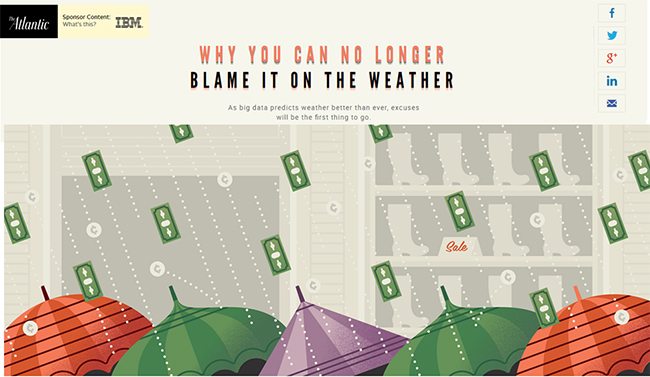If you missed it last week — perhaps studying the latest numbers from the Department of Labor? — BuzzFeed proved what everyone has always believed in theory. If you stretch enough rubber bands across a watermelon, it will eventually succumb to the pressure in one glorious Kodak moment.
The New York Times used the BuzzFeed “fruiticide” as a symbol for what’s transpiring in the news business:
“Traditional journalists everywhere saw themselves as the seeds, flying out of the frame. How do we compete with that? And if that’s the future of news and information, what’s next for our democracy? President Kardashian?”
While the NYT piece doesn’t exactly break new ground with the premise “big changes are coming fast in the way major news institutions present journalism,” its behind-the-curtain look at the business of journalism does deliver a couple of fresh insights.
First, the quest for ratings in the form of clicks dominates. Of course, the equation “more views = more revenue” has been around for years. Instead, it’s the intensity to garner clicks and sophistication in real-time analytics that now have journalists turning to their dashboards like a dopamine drip.
“This is the biggest and least talked about development in traditional print media as it converts to digital: It now has ratings, just as television does.”
Or the Olympics.

Also, the news and information business has fragmented into two categories, lightweight stuff like the BuzzFeed science project and long-form journalism often on serious topics like ISIS’ brutality. It turns out that both perform well with online readers.
What about the stories that fit between these two extremes?
While the NYT makes the point that “it’s incumbent upon news organizations to do a better job with them — make them shorter and more distinctive, with data and striking visual presentation,” this still constitutes a huge opportunity for PR and what I term corporate media (“corporate publishing” sounds like something out of the Eisenhower era and “brand journalism” connotes paid media), particularly for B2B companies.
Regardless of industry, a B2B company’s target audience values information that can be put to use in their day-to-day jobs. This means insights, analysis and even news yet to be widely reported. The mass media properties ranging from The New York Times to BuzzFeed aren’t going to chase these stories because their potential on the click-o-meter doesn’t reach seven digits. And the publishing houses behind vertical trade publications increasingly devote their precious resources to non-media products for revenue.
That’s the void waiting for corporate media.
To debate the long-term viability of corporate blogging misses the point. The audience doesn’t care about the delivery mechanism. Again, they just want “useful information” in a form that makes for easy reading. The tougher to find this “useful information” elsewhere, the more value the audience attaches to it.
Which leads me to one final point.
Whether you’re selling tractors or enterprise computing, the storytelling behind the content remains a critical success factor. Ironically, some of the best role models for industrial-grade storytelling in business communications can be found in the sponsored content in The Atlantic and The New York Times. Take the narrative from IBM which connects the esoteric concept of big data with something understood by everyone, the weather.

Imagery in the form of illustration and a clever headline pull the reader into the story. More than the requisite facts and figures, the story teases out anecdotes like the following for an entertainment bent:
“Consider the café owner who is trying to decide at which point in the season to shift the café’s promotion strategy from lattes to iced coffees. The owner, of course, knows that as summer approaches, more people will want to drink iced coffee. But he probably doesn’t know exactly when to pull the trigger, and so he guesses and hopes he’s right.”
Examples like the IBM-sponsored content on big data show the way for corporate media.
Given a choice between dull or entertaining, you can guess where people go. Why would information in business be any different?
Just don’t try to blow up a watermelon.







